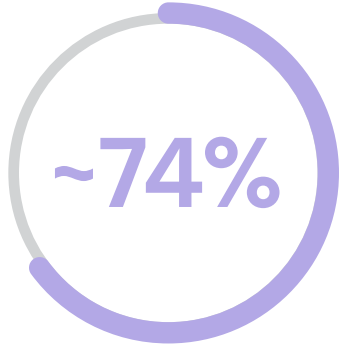- Artikel
- Bron: Campus Sanofi
- 9 apr 2025
Advancing the treatment: Meeting the challenge of uncontrolled Atopic Dermatitis (AD) and Prurigo Nodularis (PN)

Introduction
- How effectively are current medical strategies tackling the intricacies of uncontrolled AD and PN?
- What hurdles do HCPs face in finding the right treatment for severe and uncontrolled AD and PN?
- In what ways can we enhance and tailor treatment approaches for better outcomes in patients with uncontrolled AD and PN?
The overlooked impact of uncontrolled AD and PN
AD and PN, in their uncontrolled states, extend far beyond skin deep1. Patients with severe AD experience intense itching, leading to sleep disturbances and psychological distress2,3. Similarly, PN, characterized by hard, itchy nodules, often results in chronic pain and scarring4,5,6. Research indicates that these conditions, especially when uncontrolled, are associated with higher rates of anxiety and depression. The burden is not just personal; it extends to societal impacts, with increased healthcare costs and decreased productivity. The gap in addressing these needs is evident, highlighting an area ripe for improvement7,8.
Challenges in treating uncontrolled AD and PN
While treatments like topical steroids and immunosuppressants have been the mainstay for AD and PN9,17, they often fall short for some patients. The limitations of these conventional therapies lie in their inability to adequately control symptoms and prevent flare-ups in uncontrolled cases10. Furthermore, long term use of these treatments can lead to significant side effects. The complexity of uncontrolled AD and PN lies in their multifactorial nature, involving genetic, environmental, and immunological factors, which conventional treatments fail to address holistically4,5,17,18. This gap underscores the need for a shift towards more targeted advanced treatment options, including biologics11. Biologics, designed to target specific parts of the immune system, have shown promise in both clinical trials & real world, offering more effective and sustained control of symptoms.
Many patients' diseases remain uncontrolled as per PRO report

Up to 59% AD patients were uncontrolled, highlighting the unmet treatment need10

of PN patients have inadequate response to topical steroids9
Path to optimal care: Advancing treatment for uncontrolled cases
Effective management of uncontrolled AD and PN requires a keen understanding of the signs that indicate a need for advanced care11,12. Healthcare professionals must be adept at recognizing these indicators, such as frequent flare-ups, inadequate response to traditional therapies, and significant impact on quality of life10,13. Once identified, the response should be swift and tailored14. The advent of biologic therapies has changed the treatment landscape for these conditions5,21. These therapies, targeting specific immune pathways involved in AD and PN, offer a more targeted approach, can lead to better control of symptoms and overall disease management4,5,20. Recent studies have shown that biologics not only reduce the severity of symptoms but also improve the quality of life for patients8,20. Their role in the treatment regimen of uncontrolled AD and PN is becoming increasingly pivotal.
Conclusion
The journey in managing uncontrolled AD and PN is evolving. The introduction of biologics marks a significant leap forward, offering hope to patients who have struggled with these conditions5,18. For healthcare professionals, the challenge lies in not only recognizing the complexity of these diseases but also in adapting treatment plans to the individual needs of patients5,19. A patient focused approach, integrating advanced therapeutic options like biologics, is key to improving outcomes14,15,22. As we continue to advance in our understanding and treatment capabilities, our response to uncontrolled AD and PN becomes more effective, paving the way for a future where patients can lead healthier, more comfortable lives8.
-
Paller AS, et al. J Am Acad Dermatol. 2022;86:758-765
-
Heratizadeh A et al. J Eur Acad Dermatol Venereal. 2023;00:1-10
-
Weidinger S, et al. Nat Rev Dis Primers. 2018;4(1):1
-
Aggarwal Pet al. Clin Exp Dermatol, 2021;46(7):1277-1284
-
Misery L. Br J Dermatol. 2022. doi: 10.1111/bjd.21698
-
Pereira MP et al. J Eur Acad Dermatol Venereol. 2018;32(7):1059-1065
-
Fasseeh AN, et al. Dermatol Ther Heidelb. 2022;12:2653 2668.
-
Beck KM et al. JAMA Dermatol. 2019;155:118-120.
-
Todberg T et al. Acta Derm Venereol 2020; 100: adv00119
-
Kleyn CE, et al. Dermatol Ther (Heidelb) (2022) 12:1947-1965
-
Ständer HF et al. J Am Acad Dermatol. 2020;82(2):460 - 468
-
Sidbury R, et al. J Am Acad Dermatol. 2014;71(2):327-349.
-
Kwon CD et al. Medicines (Basel). 2019;6(4):97
-
Kowalski EH et al. Clinical Cosmetic Invest Dermatal. 2019;12:163-172
-
Zeidler C et al. Dermatol Clin. 2018;36:189 -197
-
Yim HJ et al. Curr Allergy Asthma Rep. 2024 Apr 78
-
Cetinkaya PG et al. Turk J Med Sci. 2019 Aug 8;49(4):963-984
-
Lienenke FMA et al. Ther Adv Chronic Dis. 2018, Vol. 9(9) 159-170
-
Torsten Z et al. Clin Transl Allergy. 2023;e12236
-
Baghoomiyan W et al. American Journal of Clinical Dermatology. 2020;21: 457-465
-
Fölster-Holst, Regina et al. Expert opinion on biological therapy vol. 22,5(2022): 643-649
-
Chen, Qianyu et al. Heliyon vol. 9,11 e22014. 8 Nov. 2023
Neem contact op

MAT-BE-2500420 1.0 03/25